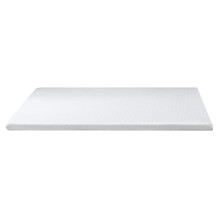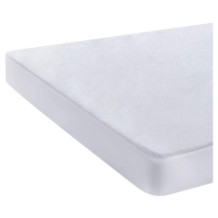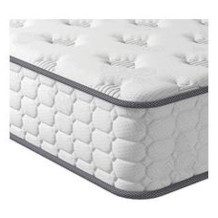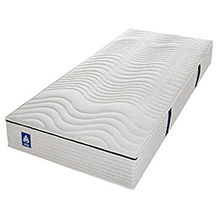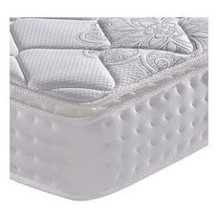Slatted bed base purchasing advice: how to choose the right product
- What You Ned to Know
- The slatted frame serves as a mattress base and allows the mattress to be ventilated and moisture to escape from it.
- It accounts for up to 30 percent of lying comfort.
- Analogous to multi-zone mattresses, there are slatted frames with different lying zones whose degrees of firmness are adapted to the individual parts of the body.
- The head and foot sections of some slatted frames can be adjusted.
- Not every slatted frame is compatible with every type of mattress.
Sleeping comfort begins under the mattress
After a good night’s sleep in a cosy bed, you feel refreshed, fresh and relaxed. You are full of energy and feel like conquering the whole world – or just lying down for a few minutes longer and enjoying the peace and quiet. On the other hand, if you sleep badly, you often feel exhausted in the morning. If insufficient lying comfort is responsible for the sleep disturbances, tensions and back pain are among the frequent evils in addition to dark circles under the eyes and concentration difficulties. A comfortable bed that allows for restful sleep is therefore extremely important. However, a good mattress alone is not enough to ensure a high level of comfort. A high-quality slatted frame is also necessary.
What is the slatted frame for?
The slatted frame functions as a mattress base and is therefore a core component of the bed. It allows the mattress to be ventilated and moisture to escape downwards. This is important because every night we secrete up to a litre of sweat, which without good ventilation quickly causes mould. But the slatted frame also plays a significant role in ergonomics: according to experts, it accounts for about 25 to 30 percent of lying comfort.
The different types of slatted frames
The market offers different types of slatted frames. The selection is large and ranges from very simple slatted frames costing less than ten euros to luxurious motorised slatted frames, some of which cost well over 2,000 euros. However, prospective buyers can only choose to a limited extent, because the slatted frame has to match the mattress. The following types of slatted frames are available:
Springwood frame
The classic springwood frame is one of the most popular slatted frames. It is usually a solid wooden frame to which springy wooden slats are attached. The slightly curved springwood slats are supported in rubber or plastic caps that spring along with the slats. The slats are made of layered wood, with six or seven layers classically glued together. Most springwood frames are equipped with a central belt that prevents the slats from slipping apart.
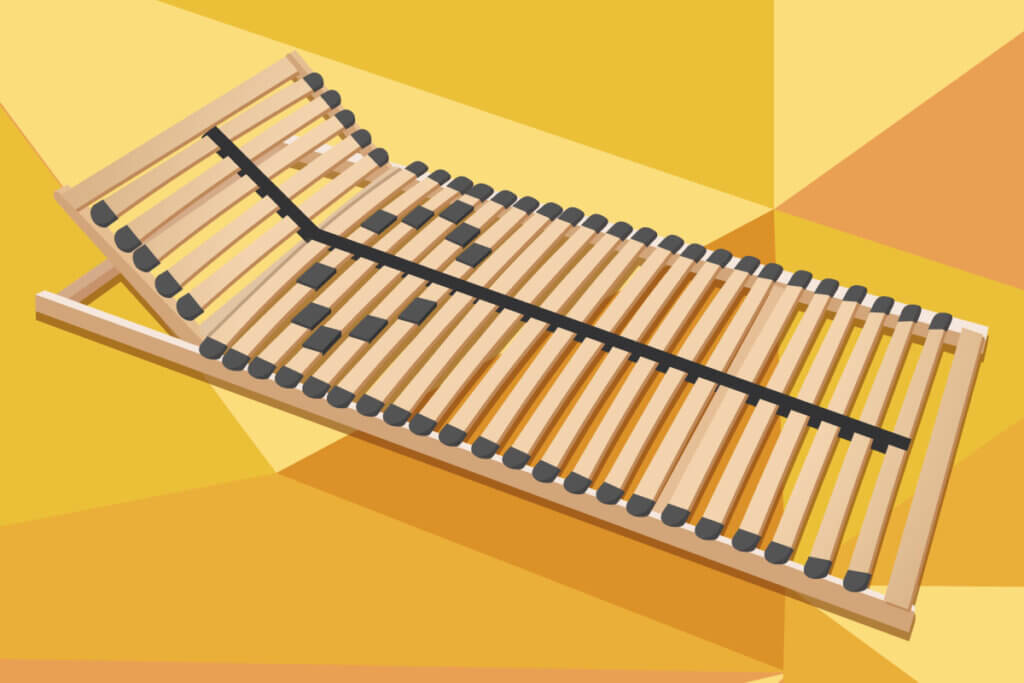
Like other types of slatted frames, springwood frames can have different lying zones with different degrees of hardness. It is often possible to adjust the firmness in the back and pelvic area and adapt it to the body weight. Unlike rigid models, adjustable models allow the head and foot sections to be raised. With electric models, this is done conveniently at the touch of a button.
Slatted frames made of plastic
Slatted frames made of plastic are constructed in the same way as spring wood frames. They are also available with different lying zones and in rigid and adjustable versions. However, they are usually of slightly lower quality and therefore less expensive.
Electric slatted frames
Electric slatted frames are adjustable models that are equipped with a motor. This ensures the greatest possible comfort. The person lying down does not even have to get up to adjust the slatted frame – they only have to reach for the radio or cable remote control. Most electric slatted frames have different lying zones. However, comfort has its price: motorised slatted frames are sometimes very expensive.
Electric slatted frames are ideal for senior citizens as well as for people with disabilities and are the standard in hospitals. However, they are also recommended for anyone who places particular value on comfort. Their only disadvantage is that they are expensive. Although bargains for less than 200 euros can be found on the internet, those who want brand-name quality sometimes have to pay 1,500 euros or more.
Slatted base
The modern slatted base is a special slatted base variant. Instead of spring slats, it has plastic plates that are attached to spring-loaded pivot bearings and can move three-dimensionally. The plates, also known as modules, are arranged in rows, have direct contact with the mattress and give way under load. They adapt to the body shape and lying position with pinpoint accuracy. Depending on the manufacturer and price range, there are different numbers of plate modules. The rule here is: the more modules, the higher the sleeping comfort. Most models have 72 modules.
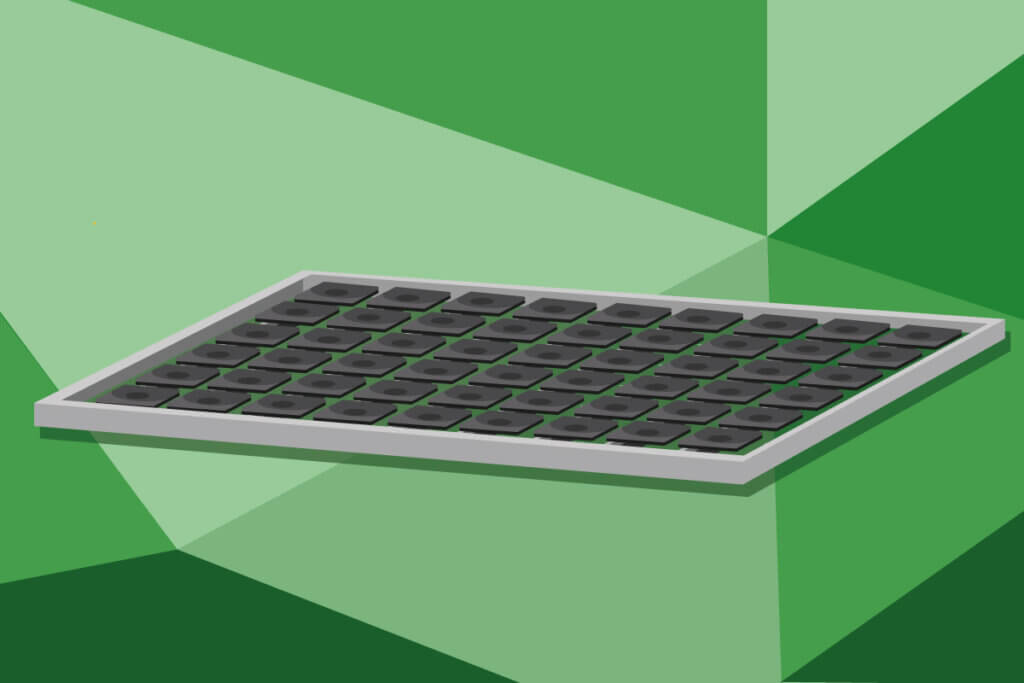
Slatted bases are available in different versions, for example with or without lying zones. They can be equipped with a motor, but are also available as simple rolling models. There are also hybrids that consist of sprung slat and slatted zones.
Plate bases are comparatively expensive – high-priced models can cost between 1,000 and 2,000 euros or even more. This type of bed base is especially recommended for people who sleep restlessly and change their lying position frequently.
Roll-Up Grille
Roller slats are the simplest and cheapest slatted frames. The wooden slats are not mounted on a frame, but are only connected by an elastic band. These models can be rolled up and transported to save space. They are particularly recommended for people who move frequently, such as students. However, they do not meet high ergonomic standards.
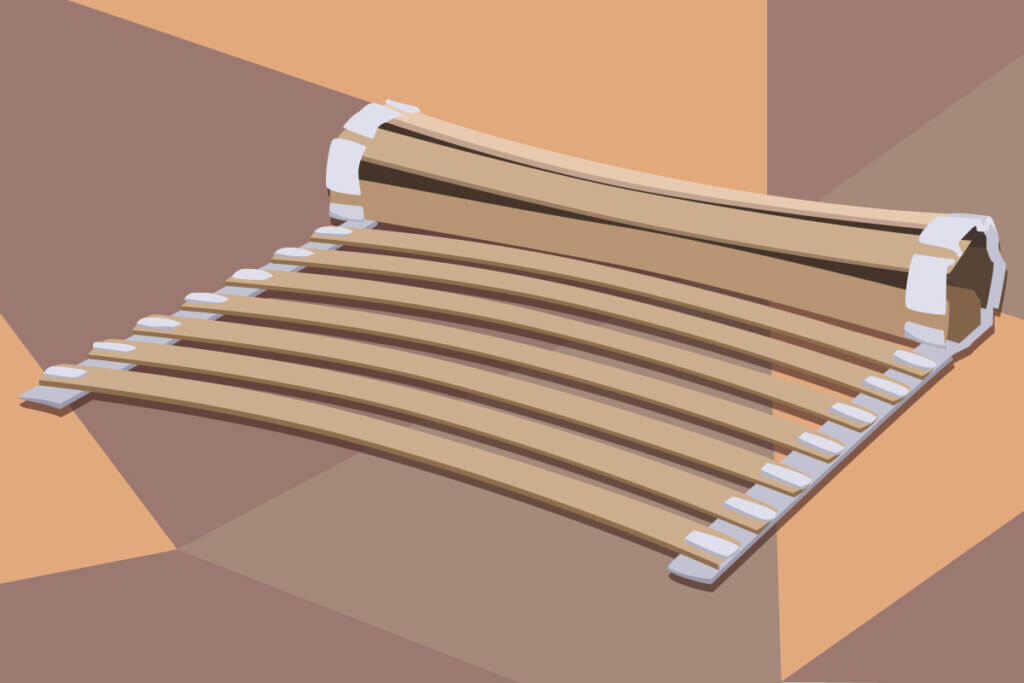
Slatted frames for overweight people
Slatted frames that are specially designed for overweight people are made of particularly stable materials such as birch plywood. They allow comfortable lying positions even with a high body weight. A middle zone reinforcement ensures that the body does not sag. It relieves the lumbar spine and buttocks by allowing ergonomically correct lying.
This slatted base should have a middle belt, because it provides additional pressure relief. It distributes the body weight more evenly over the lying surface. In the shoulder area there is a shoulder lowering zone whose springing can ideally be adjusted by a slider. This is particularly important when lying on your side, because in this position heavy weight can lead to circulatory problems and tension.
Finding the right slatted frame
The most important thing is that your new slatted frame matches your mattress. Once you have decided on a compatible slatted frame, you can think about what features the frame should have in detail. For example, should it have different lying zones and if so, how many? Can it be a rigid slatted frame or do you want an adjustable model? It should be noted that lying zones and adjustability increase the price. The material, the number of slats and the maximum load capacity are also important criteria. In addition, you should know manufacturers who offer brand quality at reasonable prices, for example Ravensberger, Schlummerparadies or FMP. We will guide you through all the aspects you need to consider when making your purchase decision as well as when using the slatted frame.
Which slatted frame for which mattress?
First of all, it is important to know: The softer and thinner the mattress, the greater the role of the slatted frame for lying comfort. For example, if the distances between the slats are large, the soft mattress sinks between them and the person lying on it may feel the individual slats. But even with a firm and high mattress, the slatted frame is important for the lying feeling.
Choosing the right slatted frame is often not easy because not every model can be combined with every mattress. You can find out what goes together in the following:
Mattresses for rigid slatted frames and roll-up frames
Rigid slatted frames and roll-up frames are compatible with all types of mattresses. The only thing to note is that multi-zone models should be combined with corresponding multi-zone mattresses.
Mattresses for adjustable slatted frames
Adjustable slatted frames are best suited for foam, visco and latex mattresses. They are not compatible with innerspring mattresses because this type of mattress is too rigid to adapt to the adjustment of the head or foot section.
Mattresses for slatted frames
Like rigid slatted frames and roll-up slatted frames, non-adjustable slatted frames can in principle be combined with any type of mattress. However, they are best suited for cold foam, visco and gel foam mattresses, as the point elasticity of these mattress types harmonises well with the point adaptability of the discs.
Number and spacing of slats
Slatted frames that have no more than 22 slats are only suitable for firm mattresses and belong to the lowest price segment. With 22 to 28 slats, medium-firm mattresses are also possible. Grids with more than 28 slats can be combined with mattresses of any firmness. With innerspring, latex and cold foam mattresses, the distance between the slats should not be greater than five centimetres. As a general rule, the narrower the slats, the smaller the distance between them and the higher the lying comfort. Good slatted frames have at least 42 slats.
The right height of the slatted frame
The right height of the slatted frame depends on how high the bed frame is. The bed frame should be at least two centimetres higher than the slatted frame so that the mattress does not slip to the side. So before buying a slatted frame, you should measure the height of the frame.
The right measurements
The slatted frame should be long and wide enough to take up almost the entire area under the mattress. So for a bed measuring 100 x 200 centimetres, you need a model that measures just under 100 x 200 centimetres. It should be noted that the dimensions given do not refer to the slatted frame itself, but to the bed. The slatted frame is about one centimetre shorter and four to five centimetres narrower than the bed size for which it is intended. It must fit comfortably into the bed frame.
There are slatted frames to fit all the usual bed sizes. For example, there are slatted frames for children’s beds that measure 70 x 140. At the other end of the spectrum are models for double beds that measure 180 x 200 centimetres, for example.
Tip: Two separate slatted frames (as well as two mattresses) are recommended for double beds. The reason for this is that partners usually weigh different amounts and therefore prefer different degrees of firmness. In addition, there are other individual preferences, which may concern the lying zone distribution, for example. From a width of 160 centimetres, double beds can also be equipped with two slats.
The lying zones
Analogous to multi-zone mattresses, there are also multi-zone slatted frames. Their different lying zones differ in hardness and are adapted to the individual parts of the body. Each part of the body weighs differently and needs a different degree of firmness. The lying zones ensure optimal pressure relief in all parts of the body. They also ensure that the spine assumes the ergonomically correct S-shape when lying on its back and forms a straight horizontal line when lying on its side.
The market offers multi-zone slats with three, five, seven and nine zones, most of which have five or seven hardness ranges. Models with five zones each have different degrees of firmness for the head, shoulders, lumbar region, pelvis and legs. In the case of slatted frames with seven zones, the upper and lower legs and the feet each have their own firmness zone. Important: The mattress should have the same lying zones as the slatted frame. For a high level of lying comfort, the slatted frame and mattress should have at least five lying zones.
The manufacturer Ravensberger proves that high-quality multi-zone slatted frames do not have to be expensive. It offers top models with different lying zones at comparatively low prices. The 7-zone MEDIMED slatted frame, which has an LGA and TÜV/GS seal of approval, is one of Ravensberger’s great recommendations.
You can also find high-quality multi-zone models from the manufacturers Schlummerparadies and FMP that don’t cost much. Another example of brand quality at a reasonable price is the 7-zone model Rhodos by FMP, whose excellent workmanship is confirmed by an LGA certificate.
Using Rhodos as an example, we show you how the zoning of a slatted frame with seven zones can look:
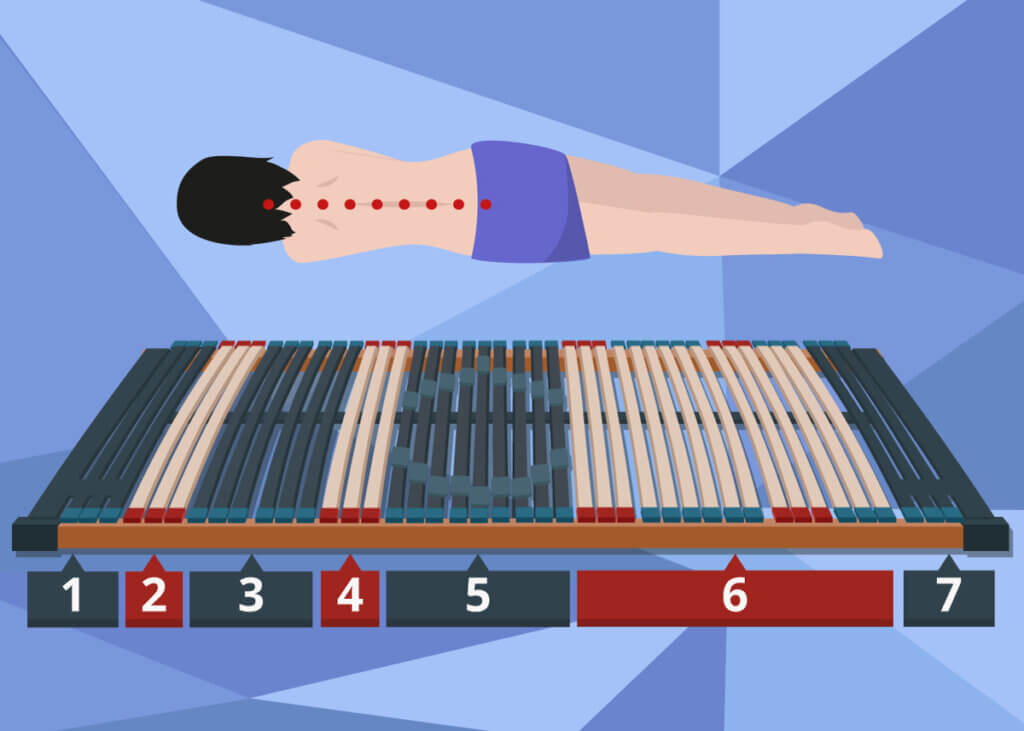
Hardness regulation
Sliders, also called adjustment sliders or simply sliders, offer the possibility of adjusting the hardness of the slatted frame in the middle and sometimes also in the shoulder area exactly to one’s own needs. A side sleeper, for example, can use them to adjust the shoulder zone so that it sinks in a little deeper in this area.
Tip: If you are not sure where the top and bottom of the slatted frame are when you put it in place, you can use the sliders to guide you if necessary. These are (mostly) located in the upper half of the slatted frame.
In the classic version, the sliders enclose double slats. If you move the sliders outwards, the corresponding area becomes harder. If, on the other hand, they are moved towards the centre, the slats become softer.
However, the market also offers alternative slat versions in which the sliders do not enclose the double slats but are located between the lower and upper slats. The hardness setting is the opposite: the further out the sliders are, the softer the slats are.
How you should adjust the sliders depends on which lying position you prefer and whether you have back problems. Basically, the higher your body weight, the softer the slat should be. In the following we clarify which slider patterns are recommended for which case. The recommendations refer to the classic slatted version, where the sliders enclose the double slats.
The right setting for side and back sleepers
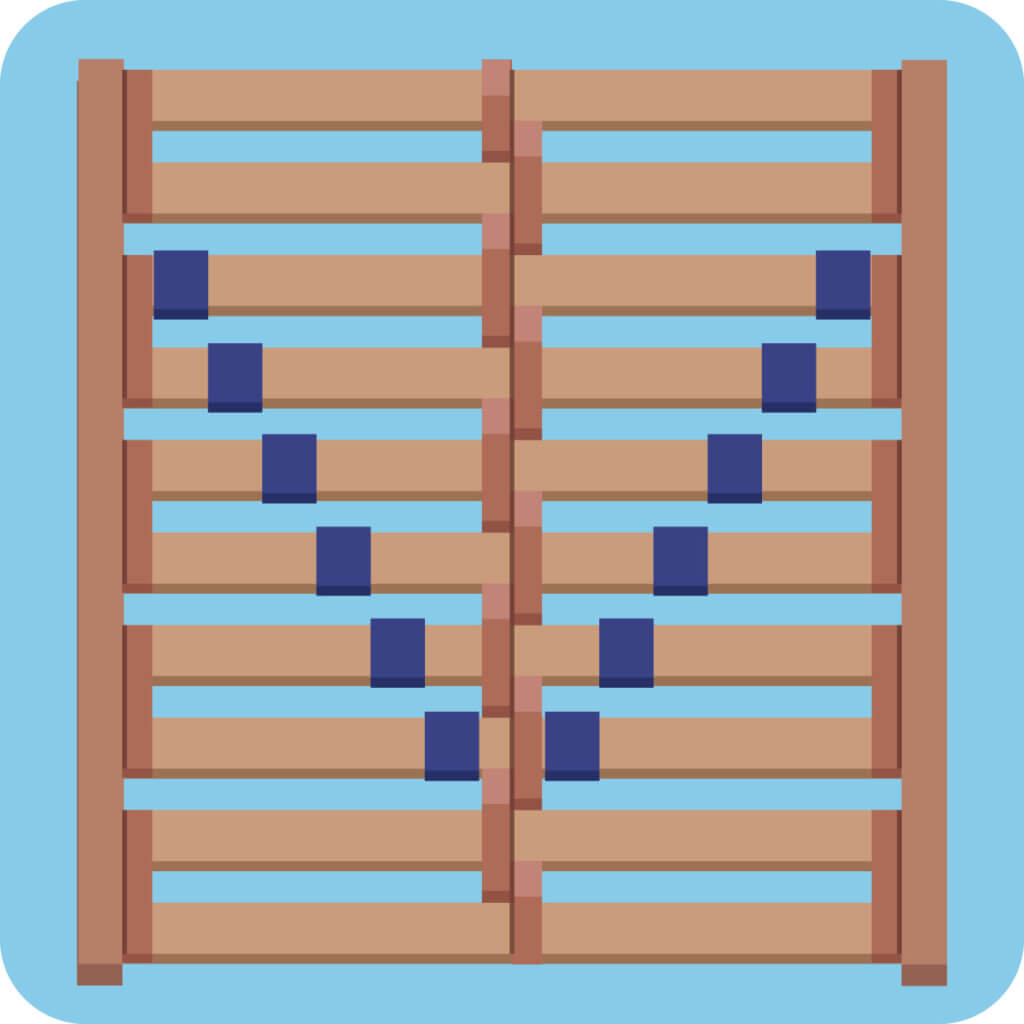
If you like to sleep on your back, you should adjust the sliders so that they form a V-shape with the tip in the pelvic area. This is because the pelvis should lie softly. The V-pattern is also recommended for side sleepers, provided that the degree of firmness of the shoulder zone cannot be adjusted. However, if there are sliders in the shoulder area as well, they should be moved inwards, because the shoulders need to be able to sink in a little when lying on their sides.
The right firmness regulation for stomach sleepers
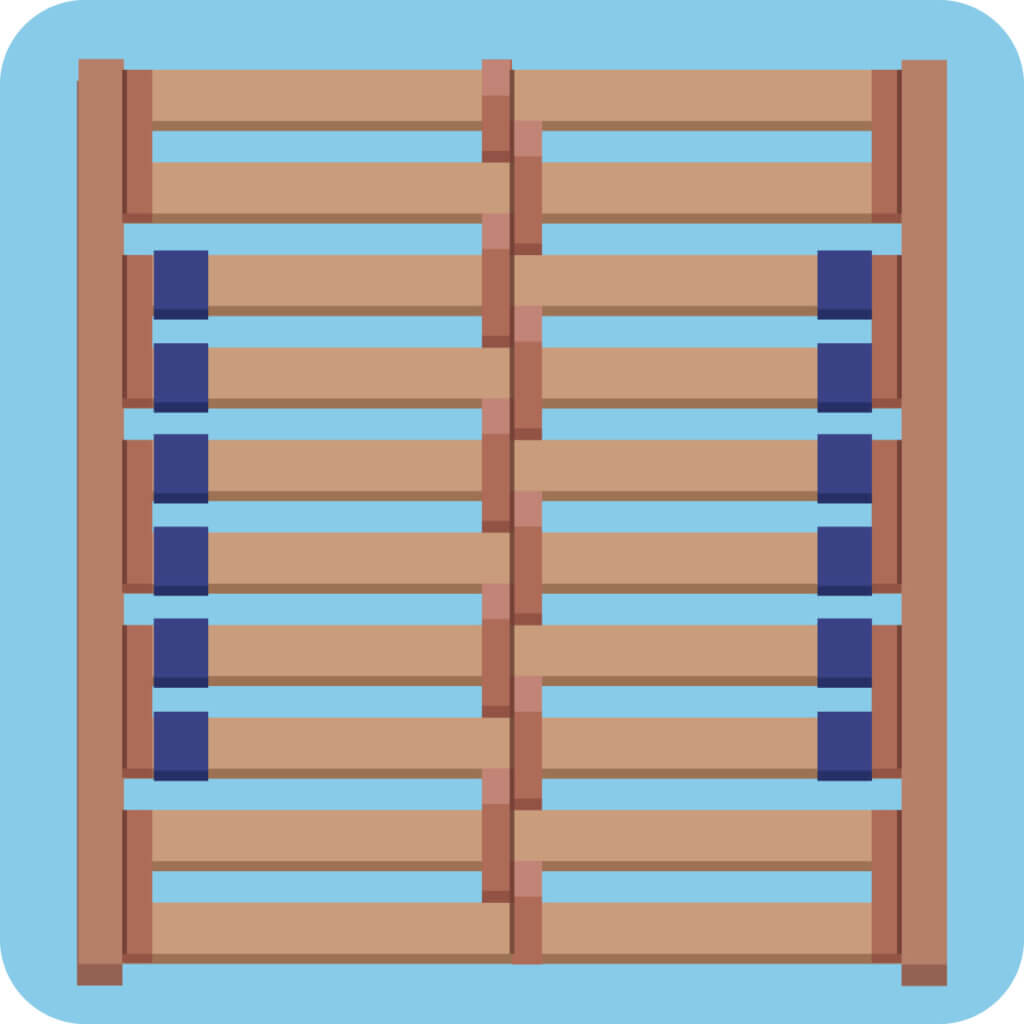
Stomach sleepers should move all sliders all the way out, because a high degree of firmness is recommended for them in all areas. Otherwise, the back will bend and back pain will result. If the hardness of the shoulder area cannot be adjusted, it can be problematic if this zone is very soft.
The slider pattern for hollow back
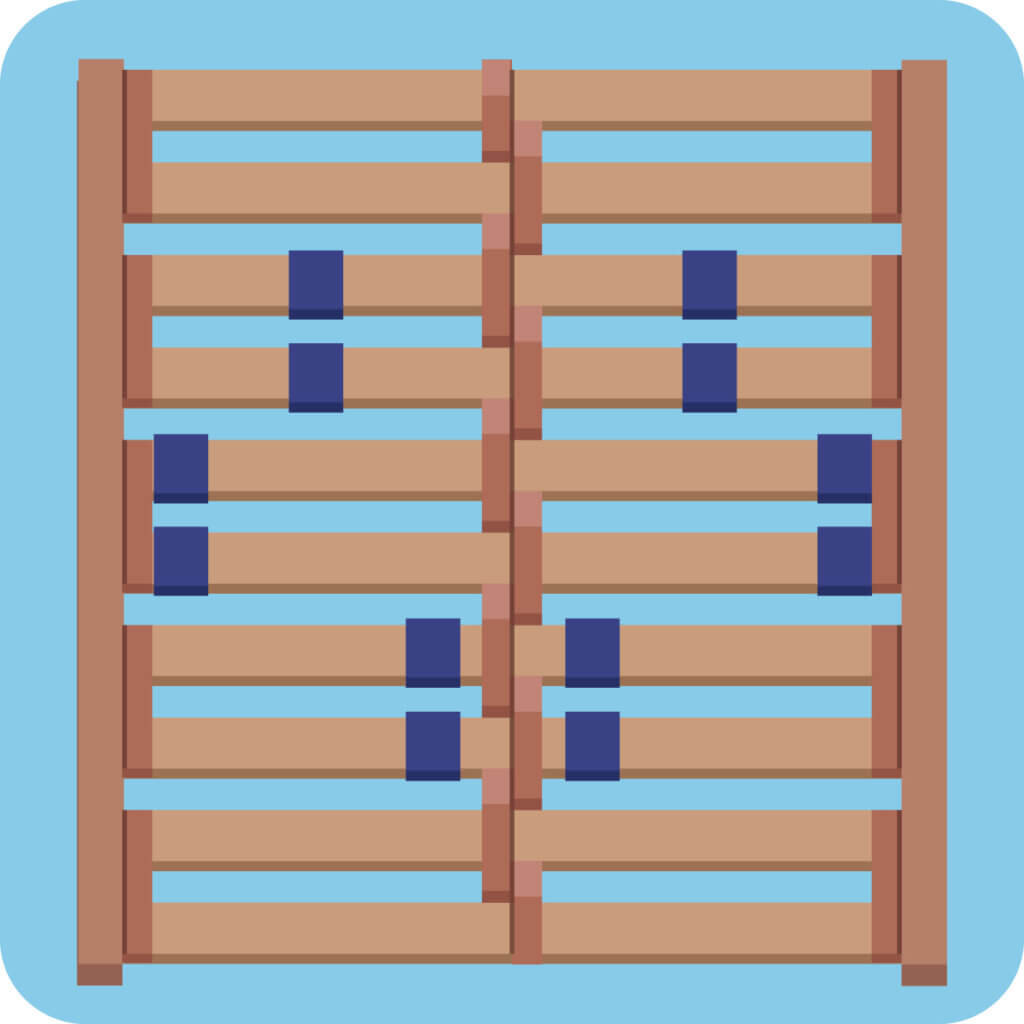
For people with a hollow back, a slightly more complicated pattern is recommended. In their case, the lower back area should be hard, so the sliders must be completely outwards. The pelvis, on the other hand, must be in as soft a zone as possible so that it can sink in easily. The upper back area should also not be too hard; a medium-firm setting is best here.
Patterns for lumbar vertebrae and intervertebral disc complaints
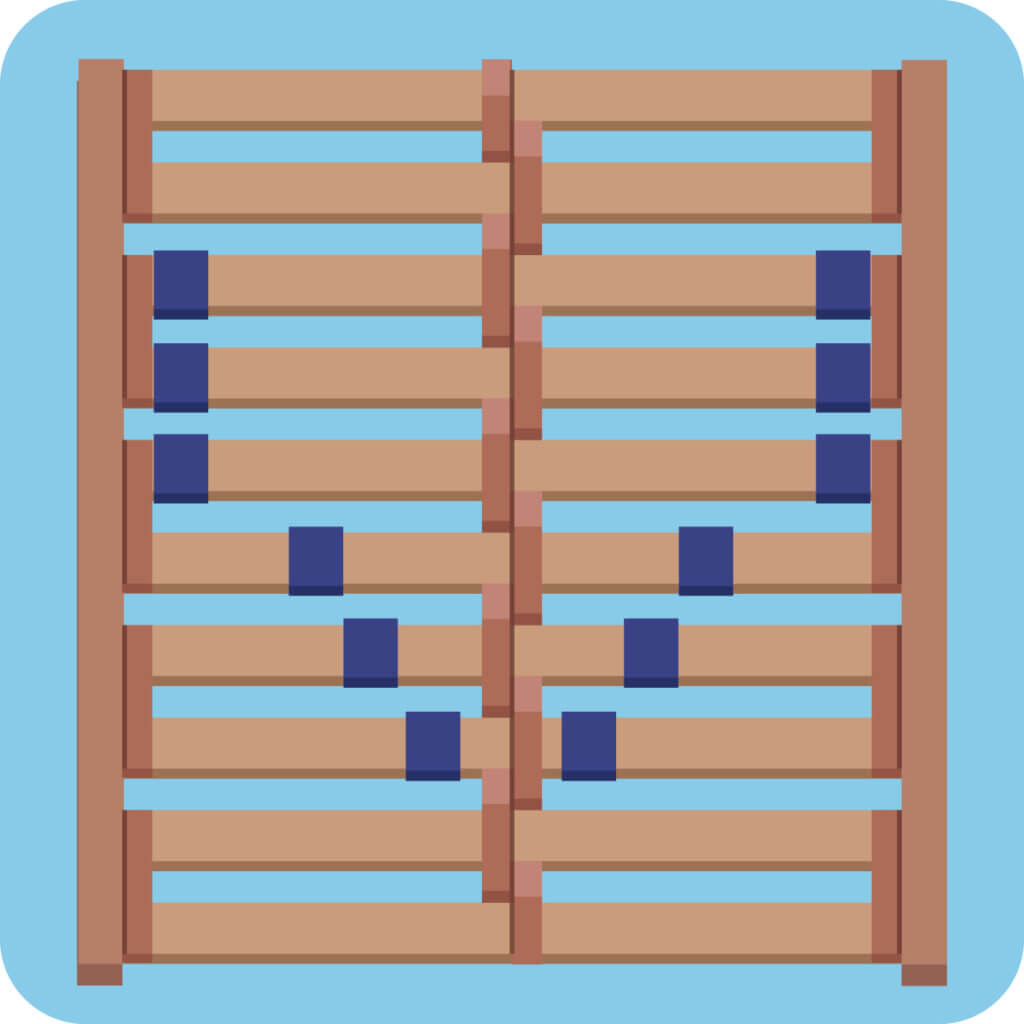
People with lumbar vertebrae or intervertebral disc problems should position the sliders on the very outside in the upper and middle back area, as this is where the back needs the most support. From the lower back onwards, the degree of firmness should decrease evenly so that the sliders form a small V in the lumbar and pelvic zones.
Slatted support on the inside and overlapping slats
The plastic and rubber caps in which the slats are stored lie either over the spar or on the inside. Both variants have their advantages and disadvantages. If the slats are above the frame, the springy lying surface extends over the edge of the bed and the springing comfort is higher. If, on the other hand, they are placed on the inside, the slat is lower, which is advantageous if the bed has a shallow depth. If the depth is low, the mattress can easily slip over the edge.
Adjustability of head and foot sections
Slatted frames with adjustable headboards make it possible to sleep with the upper body raised. This is particularly useful if the person lying down suffers from asthma or reflux. But the adjustability of the headboard is also very practical if you want to read or watch TV in bed. A footrest that can be raised is recommended for anyone who likes to put their feet up to relax. It is especially recommended for people with varicose veins, because in their case the legs should be elevated.
Depending on the model, the head and foot sections can be adjusted by up to 90 degrees, ideally continuously. To enable you to read comfortably in bed, the head section should be able to be angled by at least 45 degrees. With some slatted frames, the middle section can also be adjusted.
Electric slatted frames can be conveniently adjusted at the touch of a button. Some of them have an emergency lowering function that ensures that the slatted frame returns to its horizontal starting position in the event of a power failure. Without this function, this would have to be done manually.
If the grate does not have a motor, lift the adjustable parts by hand strap. In some cases, the head and foot sections are equipped with gas springs that make lifting easier.
Tip: A slatted frame with a motor is not only highly recommended for physically limited people and senior citizens, but also for people with certain illnesses and complaints such as asthma or circulatory disorders. If the corresponding symptoms occur, those affected can adjust the electric slatted frame quickly and easily.
The material
The material plays an important role not only for the durability of the slatted frame, but also for the sleeping comfort. The spring slats are either made of wood or plastic, the frame can also be made of metal. You need to consider the following with regard to the material:
Wood
A sprung wooden frame should be made of robust but flexible wood. The slats must not only be strong, but also spring well. In most cases, the spring wood frame is made of birch or beech, whereby the latter type of wood is the better option because it remains elastic and stable for longer. Beech wood is also better than, for example, spruce or pine wood.
Plastic
Slatted frames made of plastic tend to be cheaper than the wooden versions. They often offer slightly less spring comfort, but they also have advantages. One of their advantages is that they usually make less noise – there is hardly any creaking or squeaking. High-quality models are made with fibreglass and are thus particularly durable.
Metal
Metal frames are robust, but they are often not completely quiet. In many cases they squeak a little when you change the lying position. In addition, the screws usually loosen quite easily and you have to tighten them again and again.
The load capacity
In addition to the dimensions, manufacturers also specify the maximum body weight the slatted frame can support. The maximum weight depends on various factors, such as the number of slats, the material, the width and the workmanship. Classically, slatted frames can hold between 120 and 200 kilograms. Special designs for very overweight people, often called XXL slatted frames, can support between 300 and 400 kilograms. Children’s beds are designed for a weight of up to 100 kilograms, depending on the model. As a general rule, the load-bearing capacity of the slatted frame should be significantly higher than the body weight.
Tip: Children’s beds have to withstand a lot, because children like to romp and jump around on them. The slatted frame should therefore have a middle zone reinforcement. This makes the bed much more resilient. A middle zone reinforcement is available for slats with five or more lying zones.
When is a new slatted frame necessary?
A high-quality slatted frame usually shows the first signs of fatigue after about ten years. Some top models only need to be replaced after 15 to 20 years. However, this only applies if you use the bed exclusively for sleeping at night. If you also lie in bed a lot during the day, for example to read a book or watch TV, you have to reckon with a shorter lifespan.
You should change the grate at the latest when
- it squeaks or creaks loudly,
- the slats sag or
- the sliders no longer work properly.
In some cases, manufacturers supply spare parts. This means that the corresponding models do not necessarily have to be replaced even if they show the above-mentioned signs of fatigue. With slatted bases, you often only have to replace individual slats.
Since good mattresses can last about ten years, some guides recommend that when you replace a mattress you should also consider a new slatted frame. However, this rule of thumb has only limited validity, because generally slatted frames are more durable than mattresses.

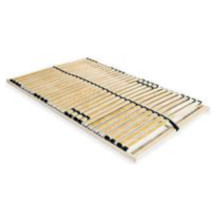
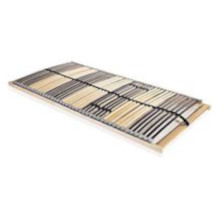
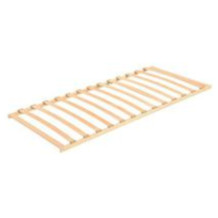
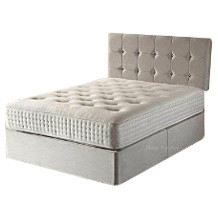
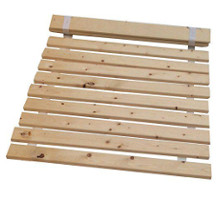
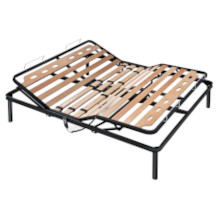
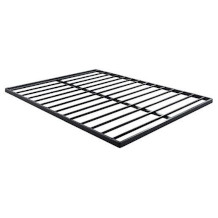
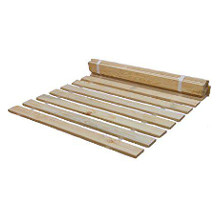
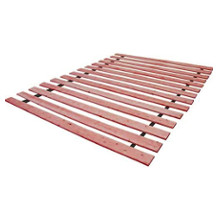
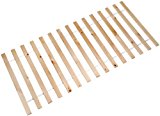
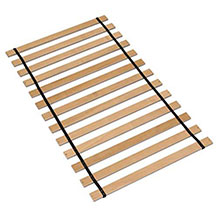
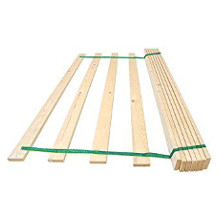
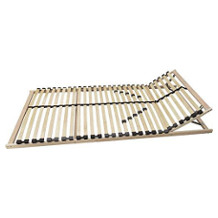

 7,421 reviews
7,421 reviews
